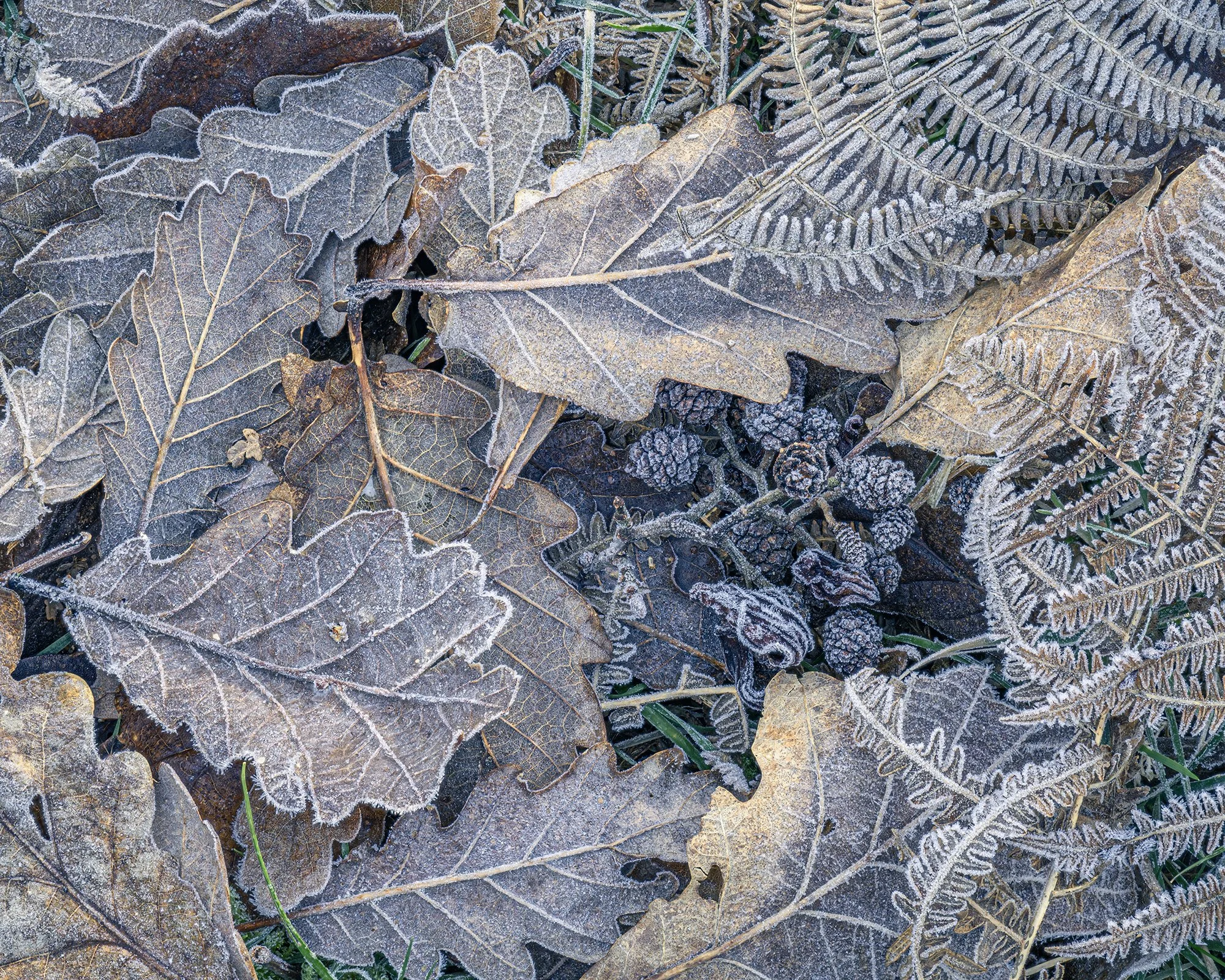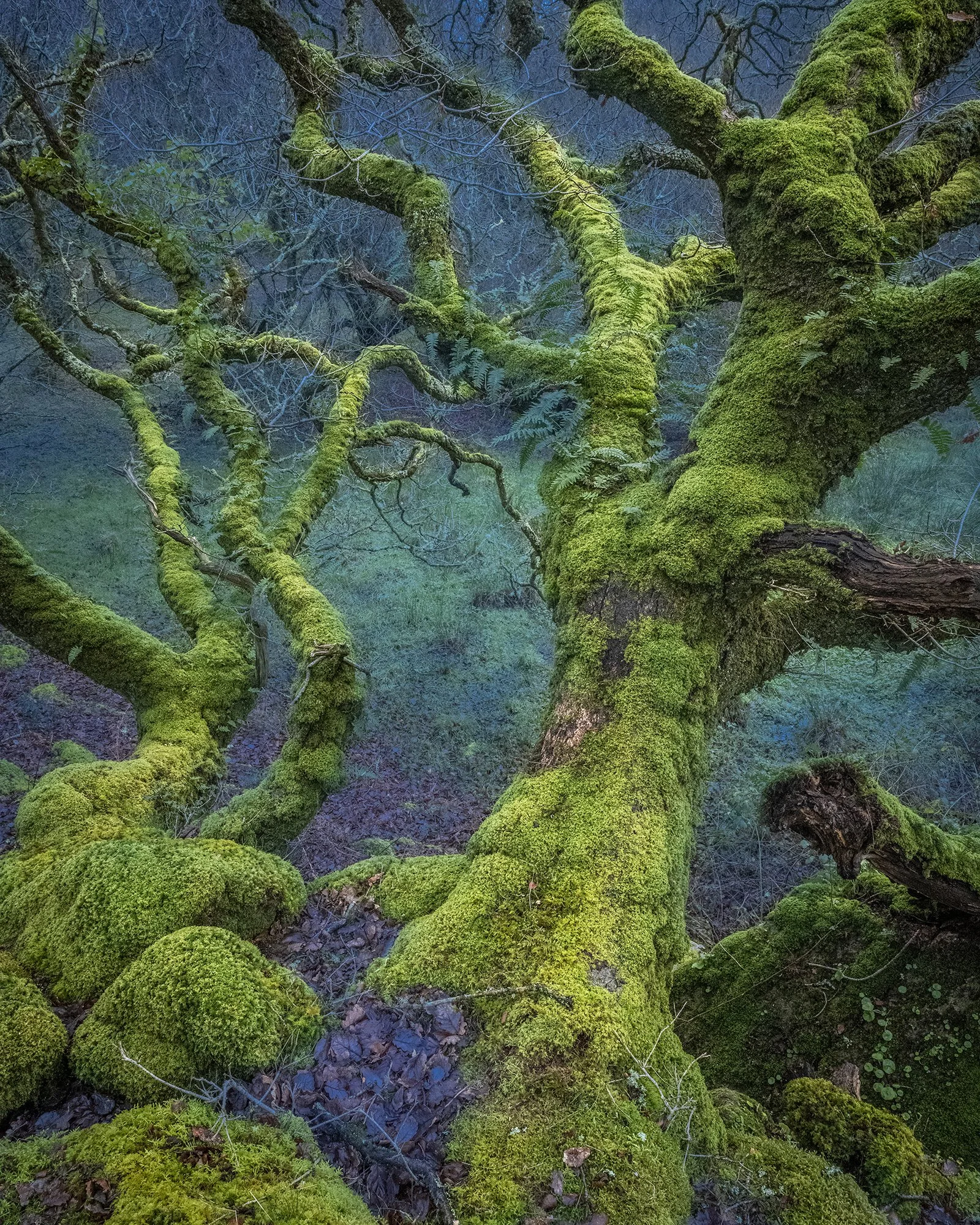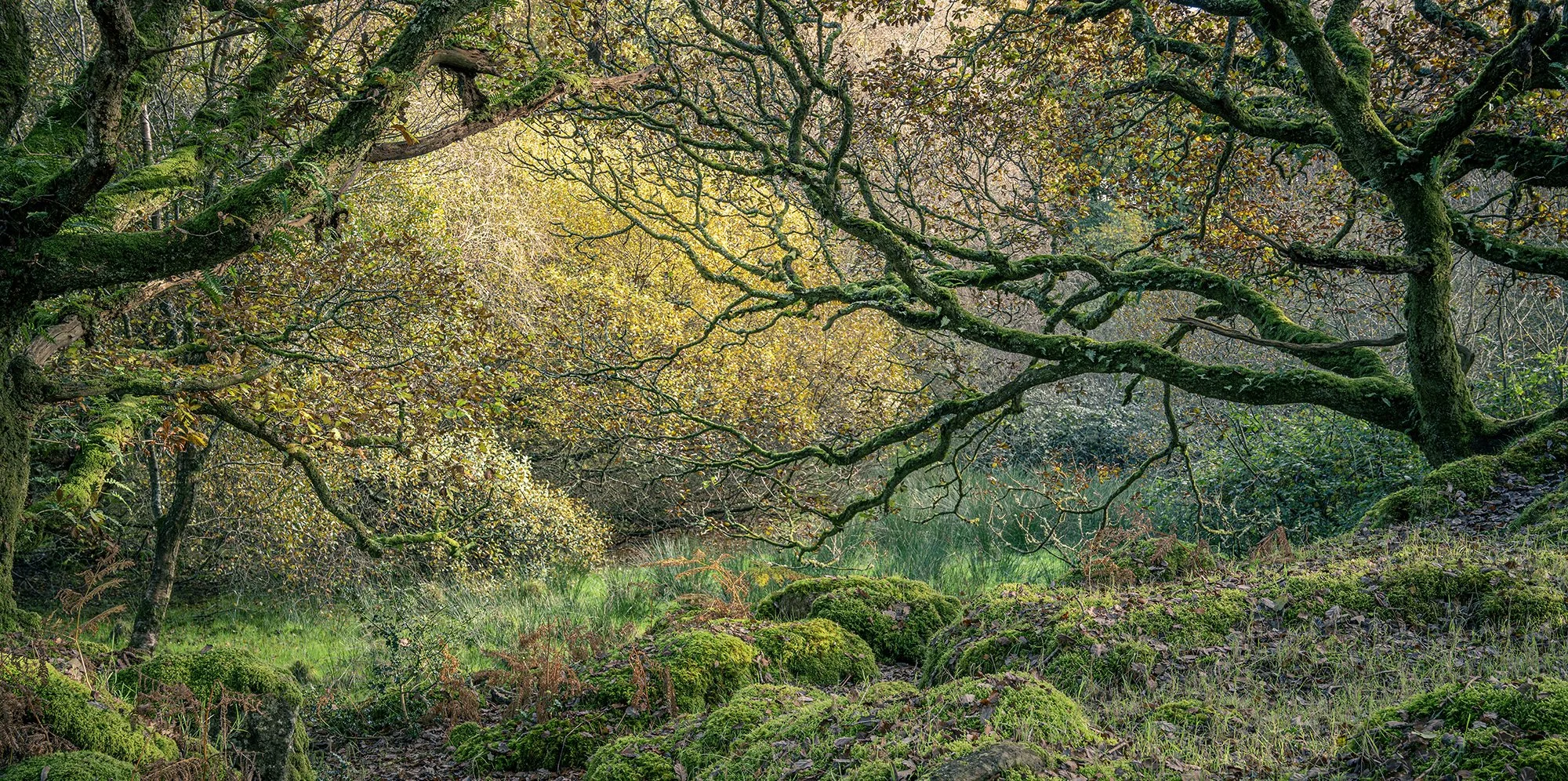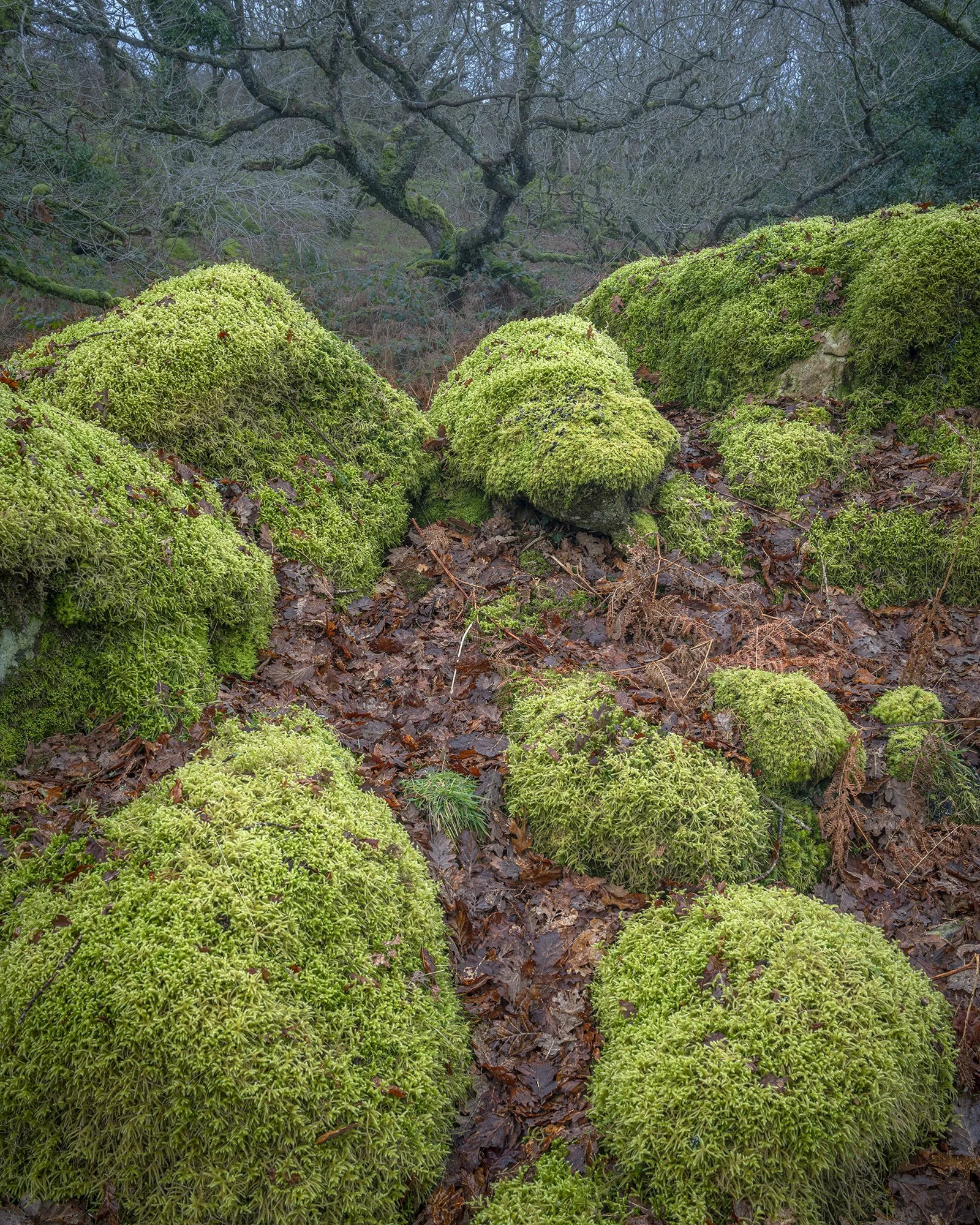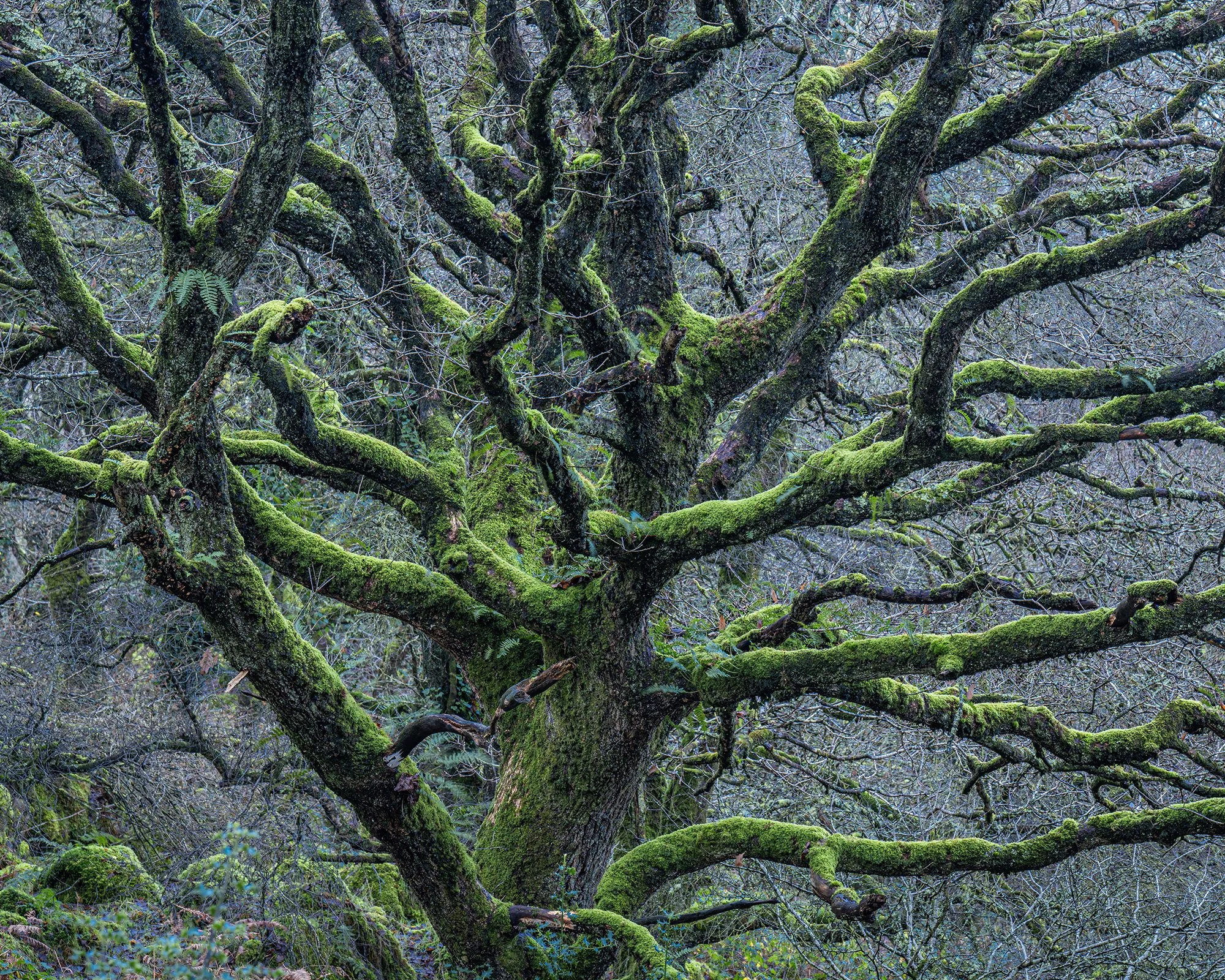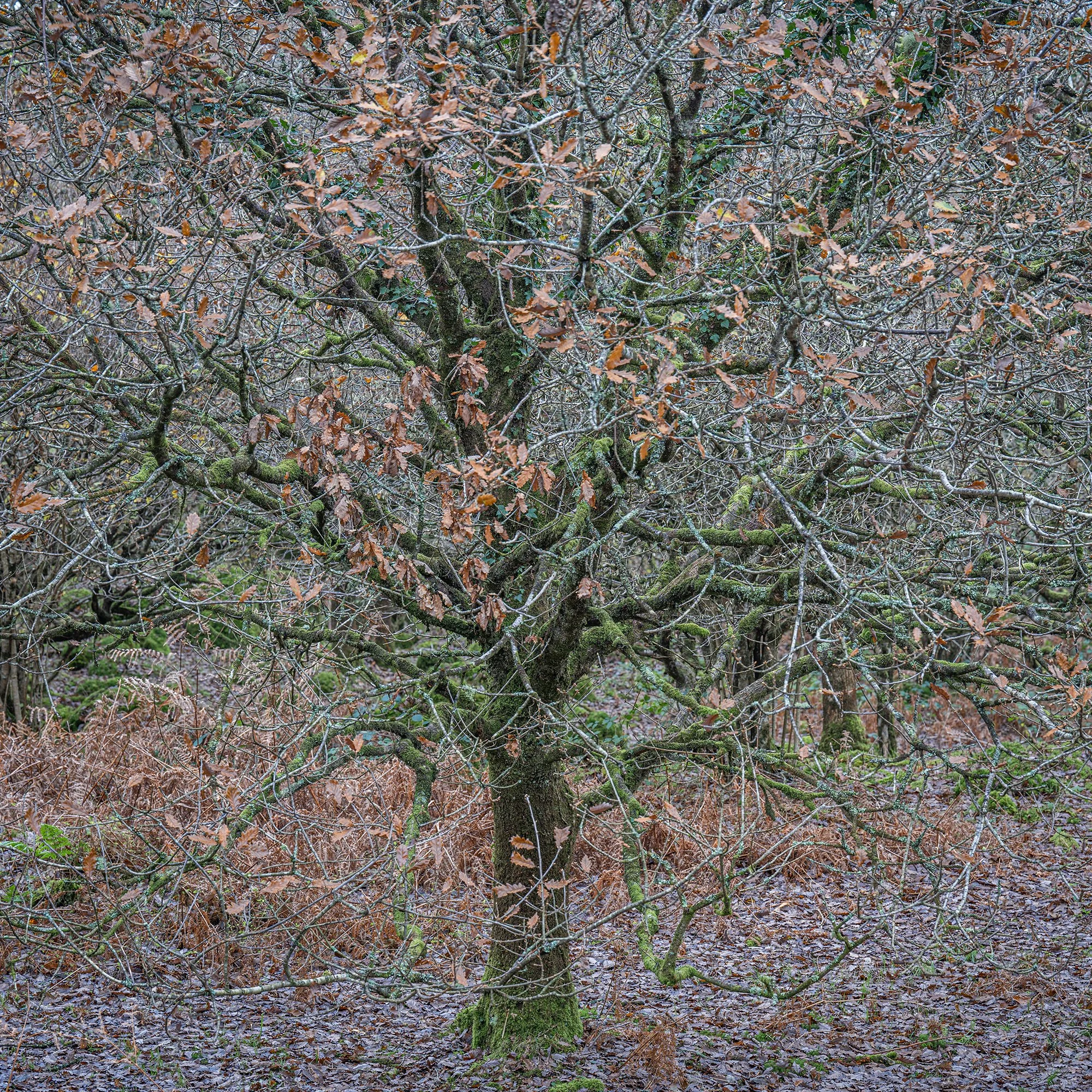From 15 August to 14 September I have an exhibition of prints from my Ty Canol book, “Coedwig Gwyllt”, as well as the book itself, in Oriel y Parc in St Davids. Oriel y Park is the visitor centre for the Pembrokeshire Coast National Park Authority that own Ty Canol. Details here:
https://www.pembrokeshirecoast.wales/oriel-y-parc/events-at-oriel-y-parc/local-artist-exhibitions/
If you’re in the area, call in!
Coed Ty Canol is an ancient woodland, close to my home, and heart, sitting in the Preseli Hills above Newport in Pembrokeshire. It is mostly a sessile oak woodland, but downy birch, beech and holly are all in abundance. It is a haven for lichen with over 400 species being present, some of global significance. Some of the individual trees are more than 800 years old, and the woodland itself was already old when the adjacent burial chamber of Pentre Ifan was built some 5,500 years ago. Such is its importance, Coed Ty Canol is designated as a Site of Special Scientific Interest (SSSI), a National Nature Reserve (NNR), and a Special Area of Conservation (SAC).
Coed Ty Canol is an example of an incredibly rare and rich eco system: a temperate rainforest. Many of us, myself included, assume that a rainforest is tropical. I had visited Ty Canol many times over many years when I read the fabulous book, "The Lost Rainforests of Britain" by Guy Shrubsole, and I learned that I was, in fact, inside a rainforest.
There are various features used to define a rainforest, such as rainfall volumes, vegetation type and the nature of the canopy. Personally, I prefer the much more pithy definition that is to be found in Guy's book: "a place where shit grows on shit, growing on other shit". By this definition, there can be little doubt that Coed Ty Canol is, indeed, a rainforest! Temperate rainforests cover less than 0.3% of the earth's land mass; much less than tropical rainforests.
Shortly after I first moved to West Wales in 2010, I learned about this mysterious and magical place and determined that I must visit, camera in hand. That first visit began the love affair. Fired up with enthusiasm, I decided to make a photographic record of what I was seeing. To say that I was disappointed with the results would be an understatement. The images were underwhelming and totally failed to capture what I was seeing and, more importantly, feeling, when I visited what was fast becoming an environment where I felt calm, centred and at ease with the world.
Well, if at first you don't succeed.... So, I persevered; I carried on trying; I continued to visit and "hunt" for images. I failed. Miserably. Again. The chaos and complexity that is Coed Ty Canol had defeated me. Disheartened, I stopped visiting, and didn't return for a couple of years. But, after this lengthy break, during which thoughts of this remarkable landscape frequently entered my consciousness, as well as pervading my unconscious mind, I felt compelled to return. This time, I didn't bother with a camera. I just walked and looked. But not only looked. I listened, I touched and stroked, I smelt the air and I tasted the water. Without wishing to get too hippy, I just connected with the place in a profound and meaningful way.
Then, I went back with my camera again. But, I still just walked, looked, listened, touched smelt and tasted. I didn't "hunt" for photographs to "take"; instead I went with a mind opened to possibility, and tried as much as I could to be in "receive" rather than "transmit", mode. I made a conscious decision that if I was lucky enough to find something that I wanted to record visually, I would treat it as a gift that had been "given" to me, and do my best to be faithful to it. If I didn't stumble across something that I wanted to visually record, that was absolutely fine, and I had had a great time. I didn't go with the intention of photographing "stuff", I went with the intention of enjoying an experience.
Over several years, I refined this approach. I thought about the essential elements of this landscape that made it so special to me, and how I might want to portray them in a photograph. For example, I made the decision that, as far as possible, I would exclude the sky from my photos to emphasise the intimacy that I felt when there. this book was formed. That idea being to use many photographs, rather than the single stand out image, to communicate a story. The story of my experience of Coed Ty Canol. An attempt to communicate the love that I feel for this wild woodland.
As described above, this book has been a long time in the making, and yet all of the images presented here have been taken in just the last two years, in over 50 individual visits. In the last 10 years, I have visited Coed Ty Canol literally hundreds of times. The older photographs, just didn't work. In a way they are the preparatory sketches that helped me feel my way to pictures that actually began to say what I wanted them to say, and that would work together to create some sort of coherent narrative (I hope!).
If you have already visited Ty Canol, you may empathise with what I have written above. If you have never been, I would encourage you to go, and hope that this book has persuaded you that it is worth a visit. In either case, I implore you to treat this unbelievably rare and fragile environment with reverence: break no branches, damage no moss and leave no litter.
Andrew Warren



